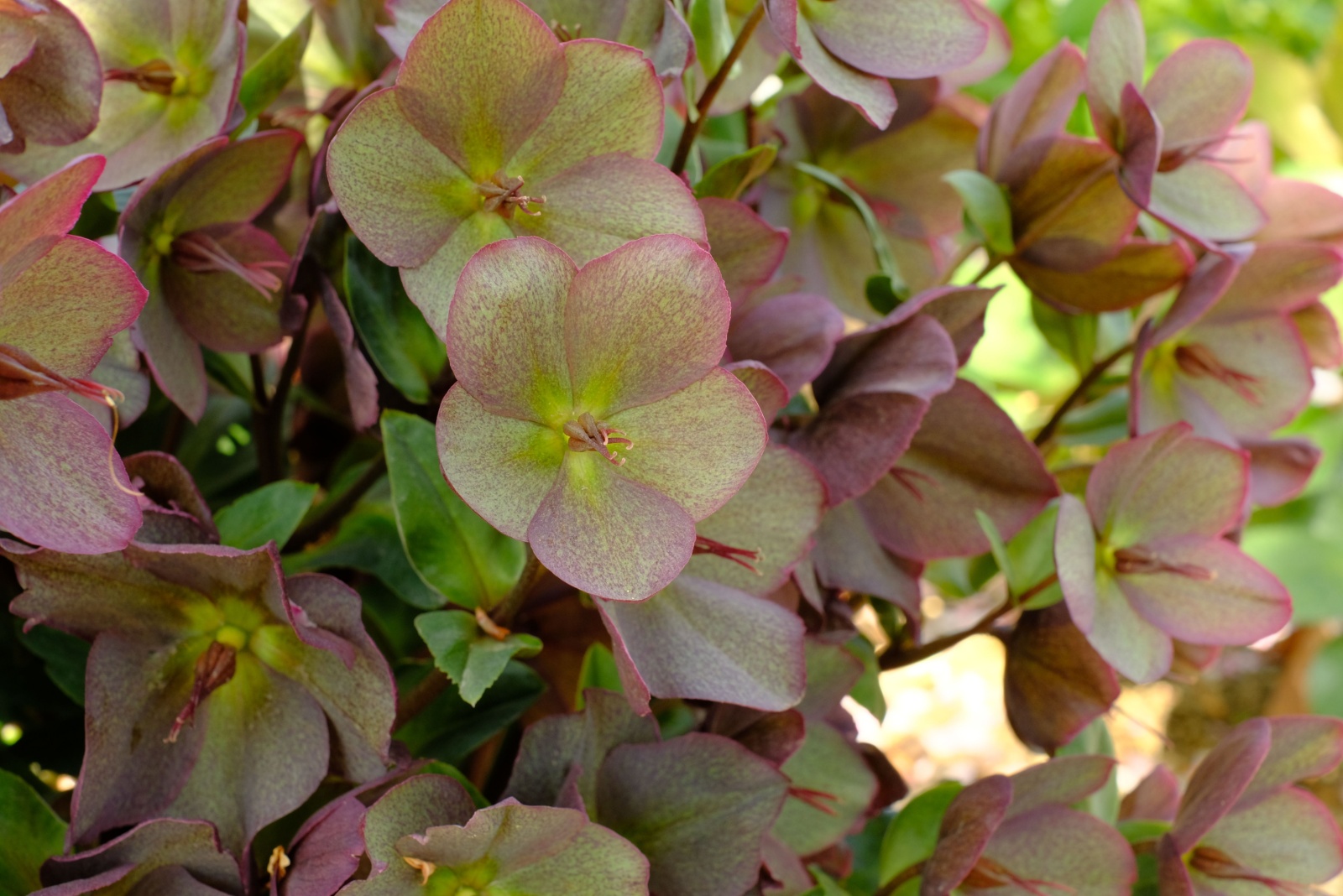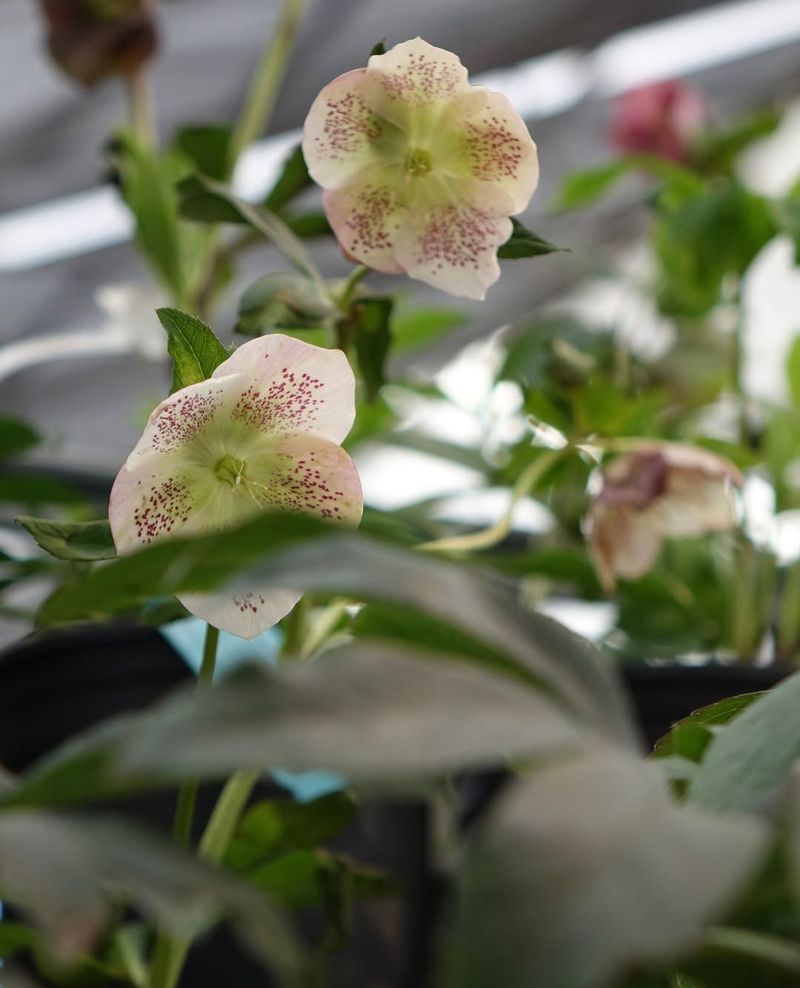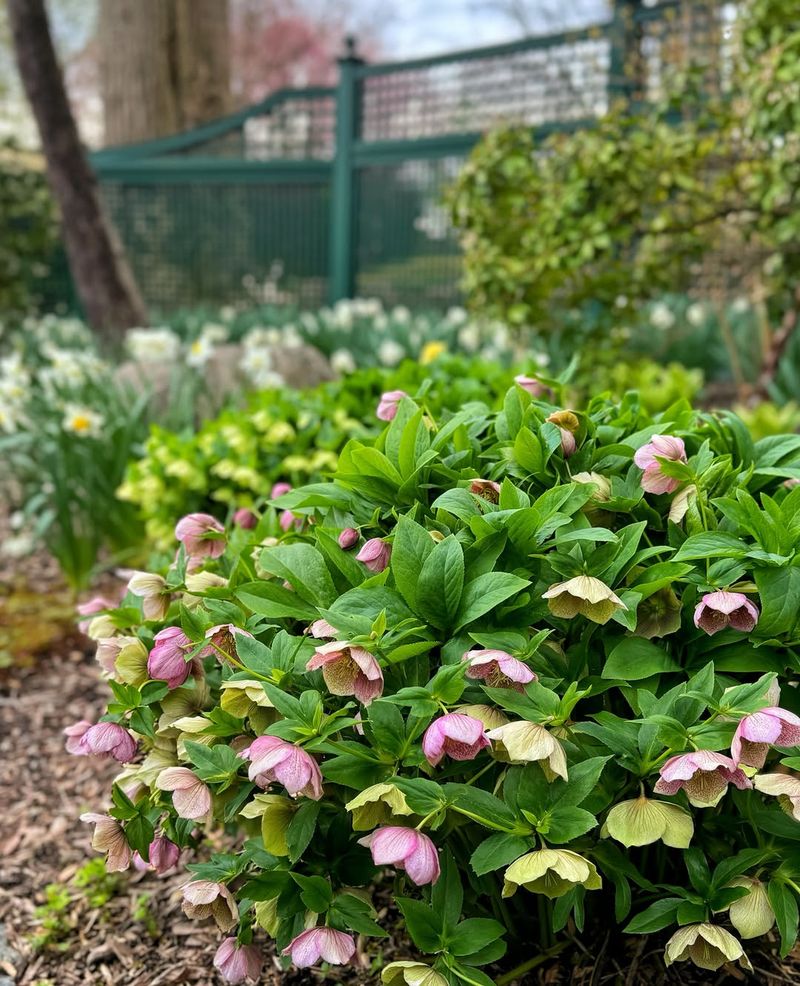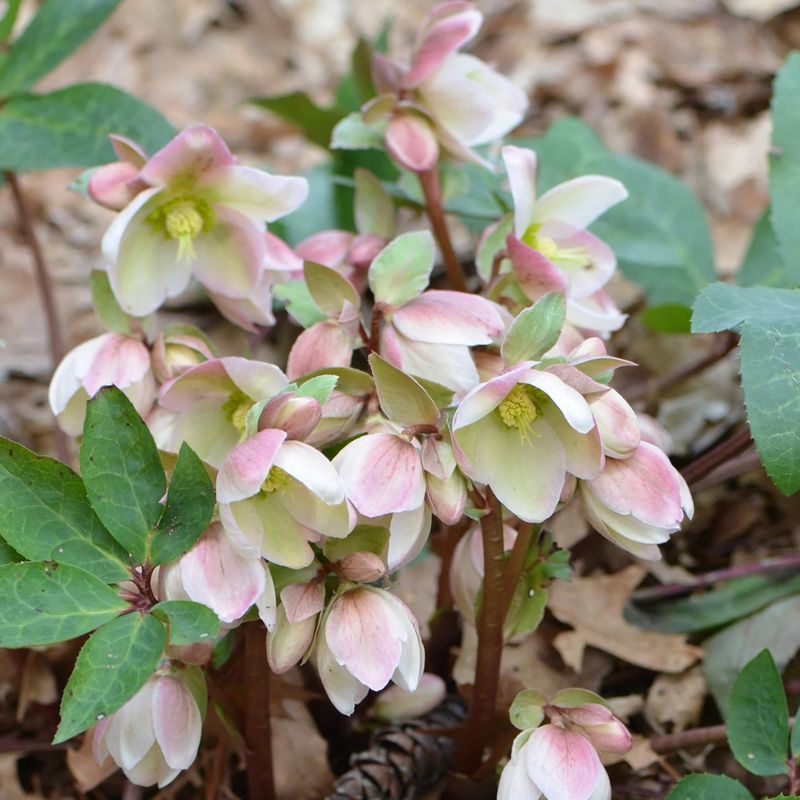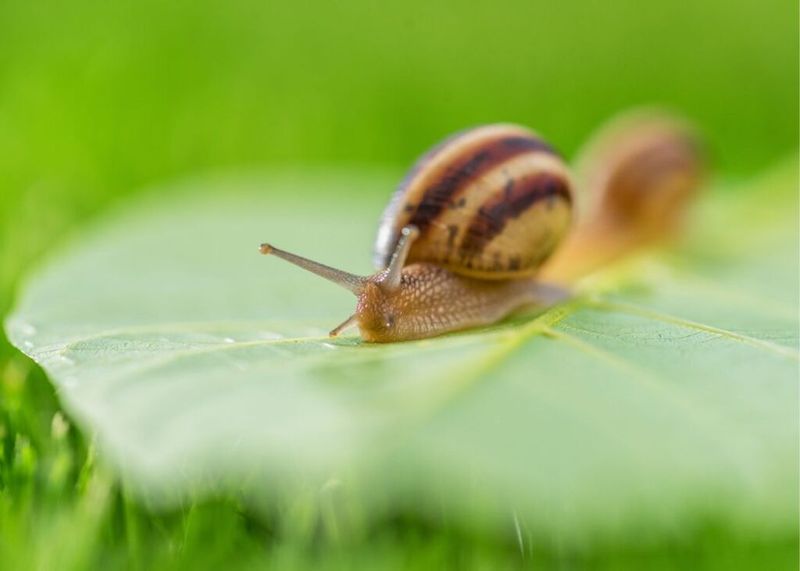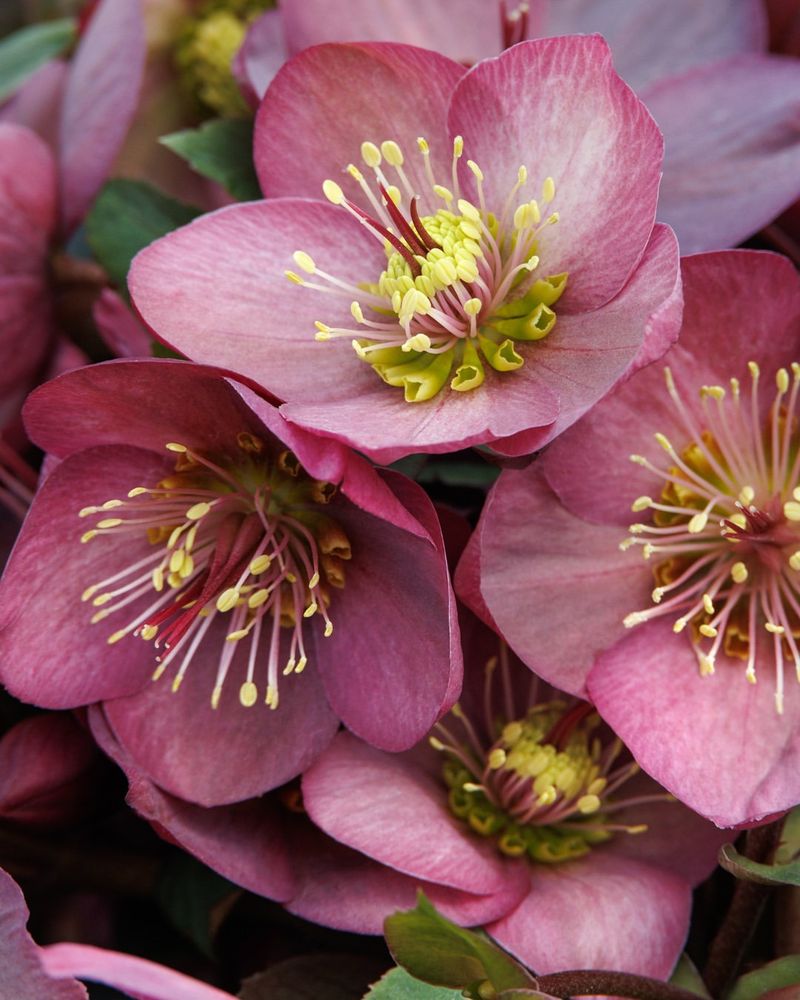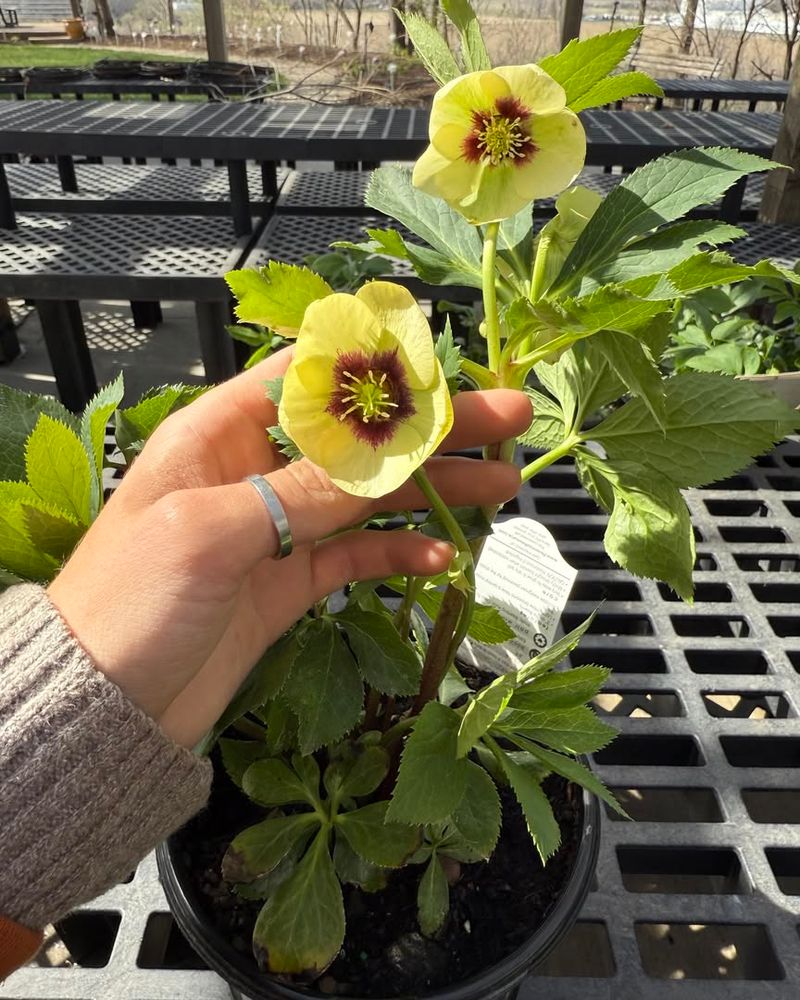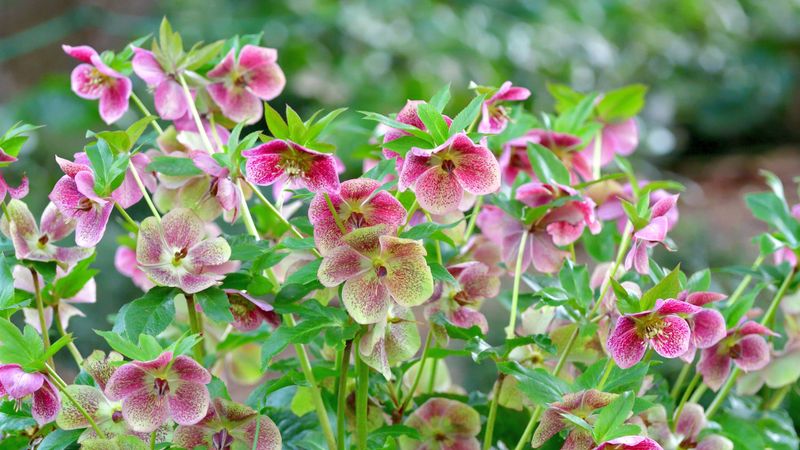If you’ve been growing hostas in your Kentucky garden for years, it might be time to mix things up. Hellebores offer a fresh twist while still thriving in those shady spots.
Like hostas, they’re low-maintenance and love the shade—but hellebores bloom early and bring a unique elegance. Their nodding flowers add quiet beauty when little else is awake.
I’ve found they handle Kentucky’s climate with ease, even through winter’s chill. Tough, graceful, and dependable—hellebores are a lovely upgrade for any shade garden.
1. Blooms Arrive When Gardens Need Them Most
While hostas sleep through winter, hellebores wake up your garden with flowers as early as February. Their blooms push through snow and frost, bringing color when Kentucky landscapes look bare and brown.
These early flowers provide food for bees and other pollinators emerging from winter. The blooms last for months, not weeks, giving you color from late winter straight through spring when most plants are just waking up.
2. Deer Walk Right Past Them
Anyone gardening in Kentucky knows the frustration of deer munching on hostas overnight. Hellebores contain compounds that deer find distasteful, so they leave these plants alone completely.
You won’t need fences, sprays, or other deterrents to protect your hellebores. Plant them freely throughout your yard without worry. This makes them ideal for woodland gardens or areas where deer regularly browse, giving you one less gardening headache to manage each season.
3. Foliage Stays Attractive Year-Round
Hostas disappear completely in fall, leaving empty spaces in your garden beds. Hellebores keep their leathery, dark green leaves through winter, providing structure and coverage when other perennials have died back.
The evergreen foliage looks handsome even during Kentucky’s coldest months. Some varieties develop burgundy tints in winter, adding subtle color. Your garden maintains its finished appearance instead of looking bare and neglected from November through March, which makes a big difference in curb appeal.
4. They Handle Our Clay Soil Better
Kentucky’s heavy clay soil can be challenging for many plants, but hellebores actually tolerate it quite well. They don’t demand the rich, loose soil that hostas prefer for best growth. Once established, hellebores develop deep root systems that penetrate clay effectively.
They’re less prone to crown rot in wet clay than hostas, which often struggle during our humid summers. Just add some compost at planting time, and they’ll adapt to whatever soil conditions your yard offers without constant amendment.
5. Slugs And Snails Ignore Them
Hostas attract slugs like magnets, leaving leaves riddled with holes by midsummer. Hellebores have tough, leathery foliage that slugs find unappetizing and difficult to chew through. You’ll save time and money not buying slug bait or setting beer traps around your plants.
The leaves stay clean and unmarked throughout the growing season in Kentucky’s humid climate. This means less maintenance and better-looking plants without the frustration of battling slimy pests that come out every night to feast on your garden.
6. Drought Tolerance Beats Hostas Hands Down
Hostas wilt and brown at the edges during dry spells, but established hellebores handle drought much better. Their deep roots find moisture even when surface soil dries out during Kentucky’s occasionally dry summers.
You won’t need to drag hoses around as often to keep them looking good. While they appreciate regular water, missing a week or two won’t leave them crispy and sad. This resilience makes them perfect for gardeners who travel or for areas farther from water sources where frequent irrigation becomes a chore.
7. More Color Variety In The Flowers
While hostas are grown mainly for foliage, hellebores put on a spectacular flower show. Blooms come in white, pink, purple, yellow, green, and even near-black shades, often with spots or picotee edges. Many varieties feature multiple colors in a single flower, creating artwork in each bloom.
Kentucky gardeners can choose from dozens of cultivars to match any color scheme. The flowers face downward, encouraging you to look closely and discover their intricate beauty, making them conversation starters when visitors explore your shade garden beds.
8. They Actually Multiply Over Time
Hostas need dividing every few years or they decline, but hellebores improve with age. Mature clumps produce more flowers each season and may self-seed, giving you free baby plants around the mother plant.
These seedlings often show interesting color variations, creating unique plants you won’t find in nurseries.
In Kentucky gardens, established hellebores can live for decades without division. They slowly expand into impressive specimens that become focal points in shady areas, increasing in value and beauty year after year without demanding the maintenance hostas require.

